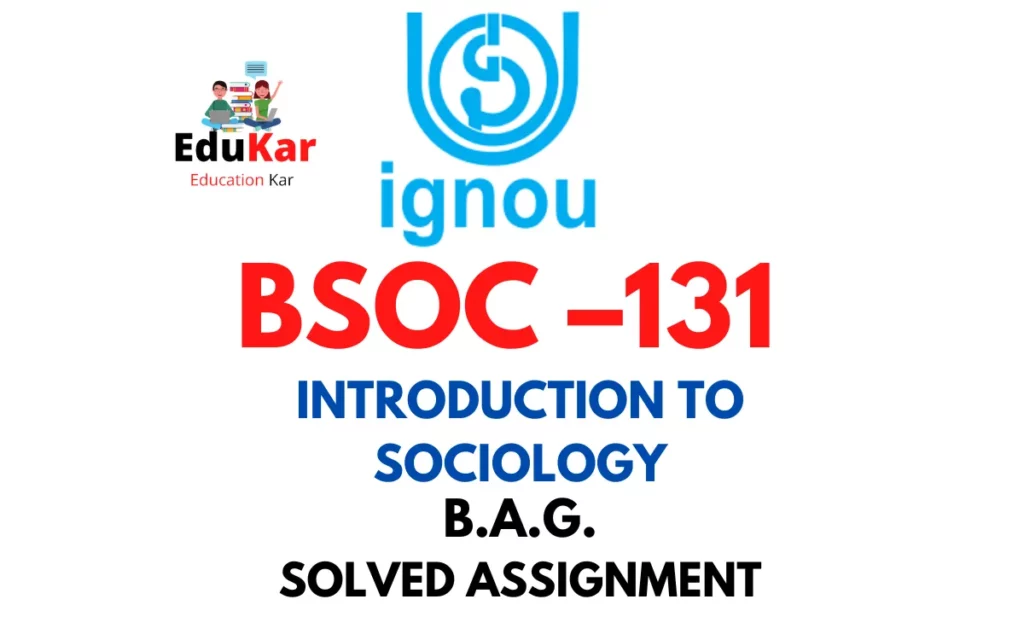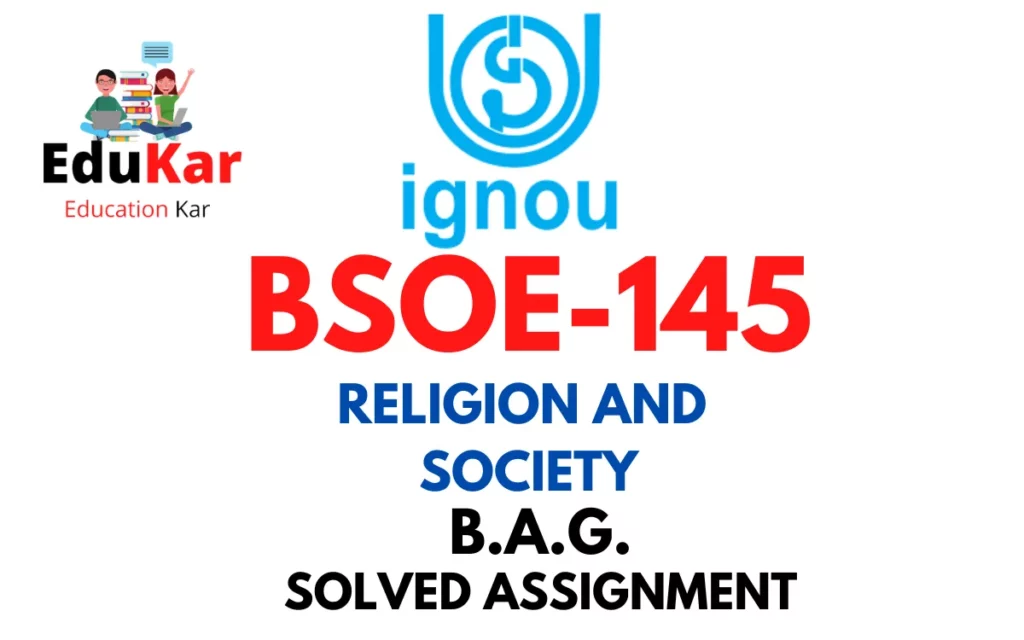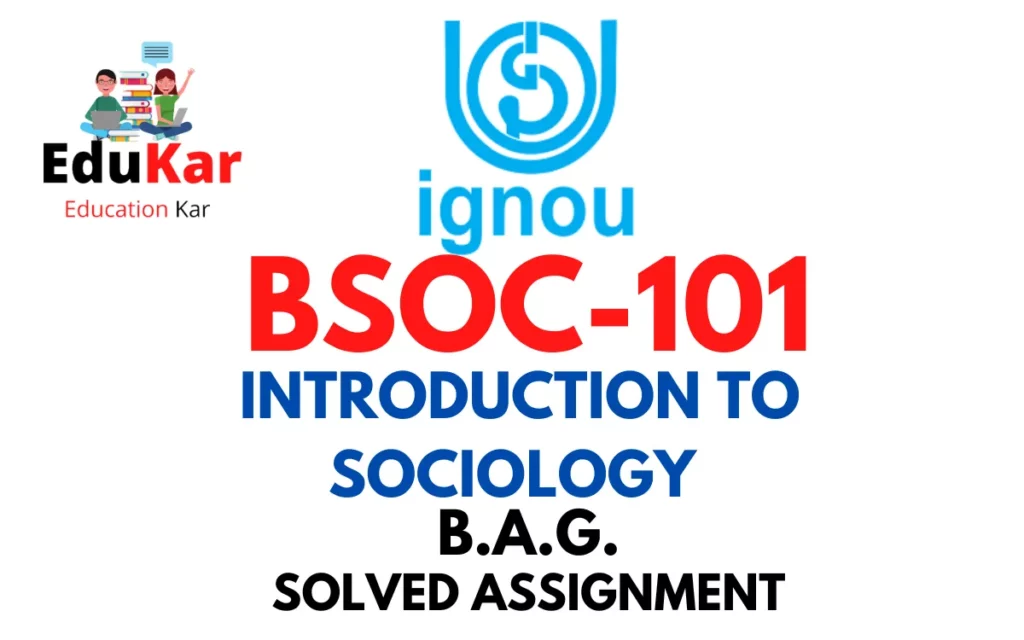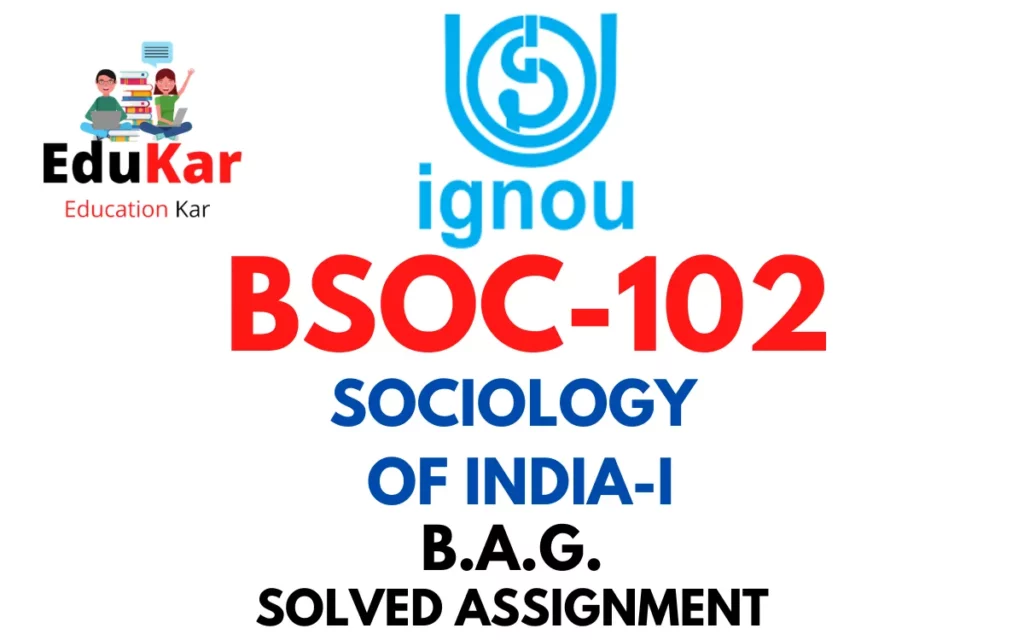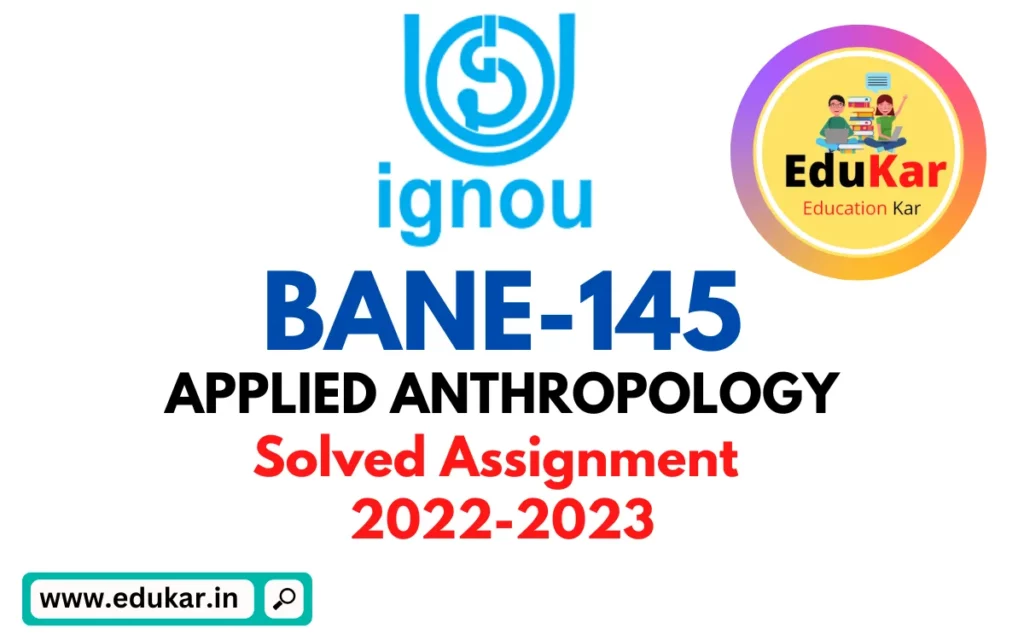Contents
- 1 Assignment – I
- 2 Answer the following in about 500 words each.
- 3 1. What is the relationship between economy and society? Discuss with suitable examples.
- 4 2. Describe the two different schools of thought-formalism and substantivisim.
- 5 Assignment – II
- 6 Answer the following questions in about 250 words each.
- 7 3. Discuss the views of Max Weber and Karl Marx on the relation between economy and society?
- 8 4. What did Karl Polanyi mean by the concept of embededness of economy?
- 9 5. Discuss with examples the nature of reciprocity found in society.
- 10 Assignment – III
- 11 Answer the following questions in about 100 words each.
- 12 6. What were the core ideas of Mark Granovetter on “embededness” in society?
- 13 7. What is the meaning of generalized reciprocity? Explain.
- 14 8. Discuss the nature of society of people dependent on hunting and gathering?
- 15 9. Define and discuss the meaning of pomology with examples?
- 16 10. What do you understand by ‘modes of production’ Give an example?
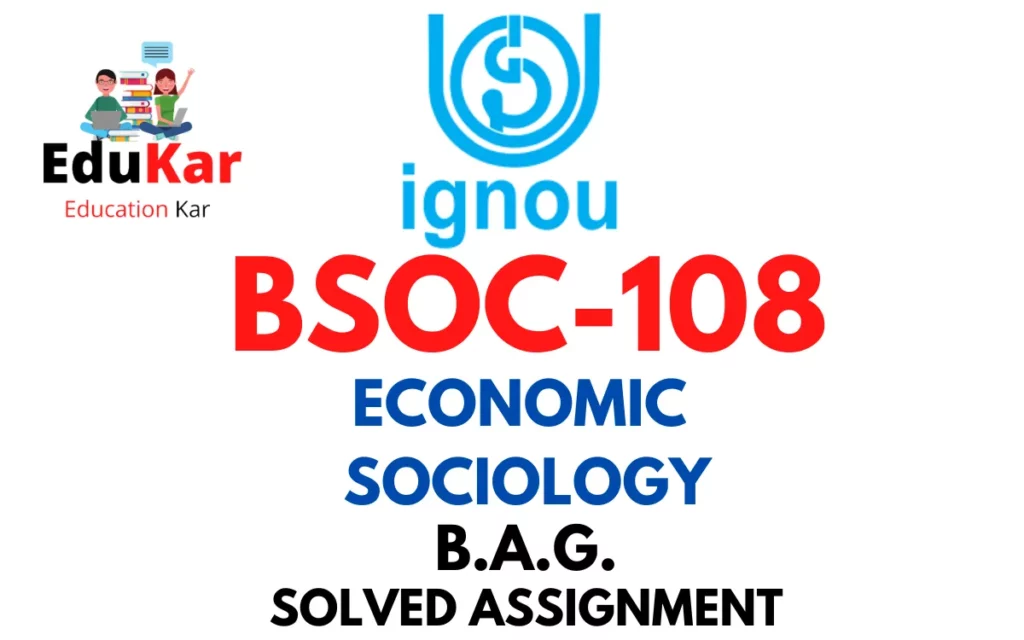
| Title | BSOC-108: IGNOU BAG Solved Assignment 2022-2023 |
| University | IGNOU |
| Degree | Bachelor Degree Programme |
| Course Code | BSOC-108 |
| Course Name | ECONOMIC SOCIOLOGY |
| Programme Name | Bachelor of Arts (General) |
| Programme Code | BAG |
| Total Marks | 100 |
| Year | 2022-2023 |
| Language | English |
| Assignment Code | BSOC-108/ASST/TMA/2022-23 |
| Assignment PDF | Click Here |
| Last Date for Submission of Assignment: | For June Examination: 31st April For December Examination: 30th September |
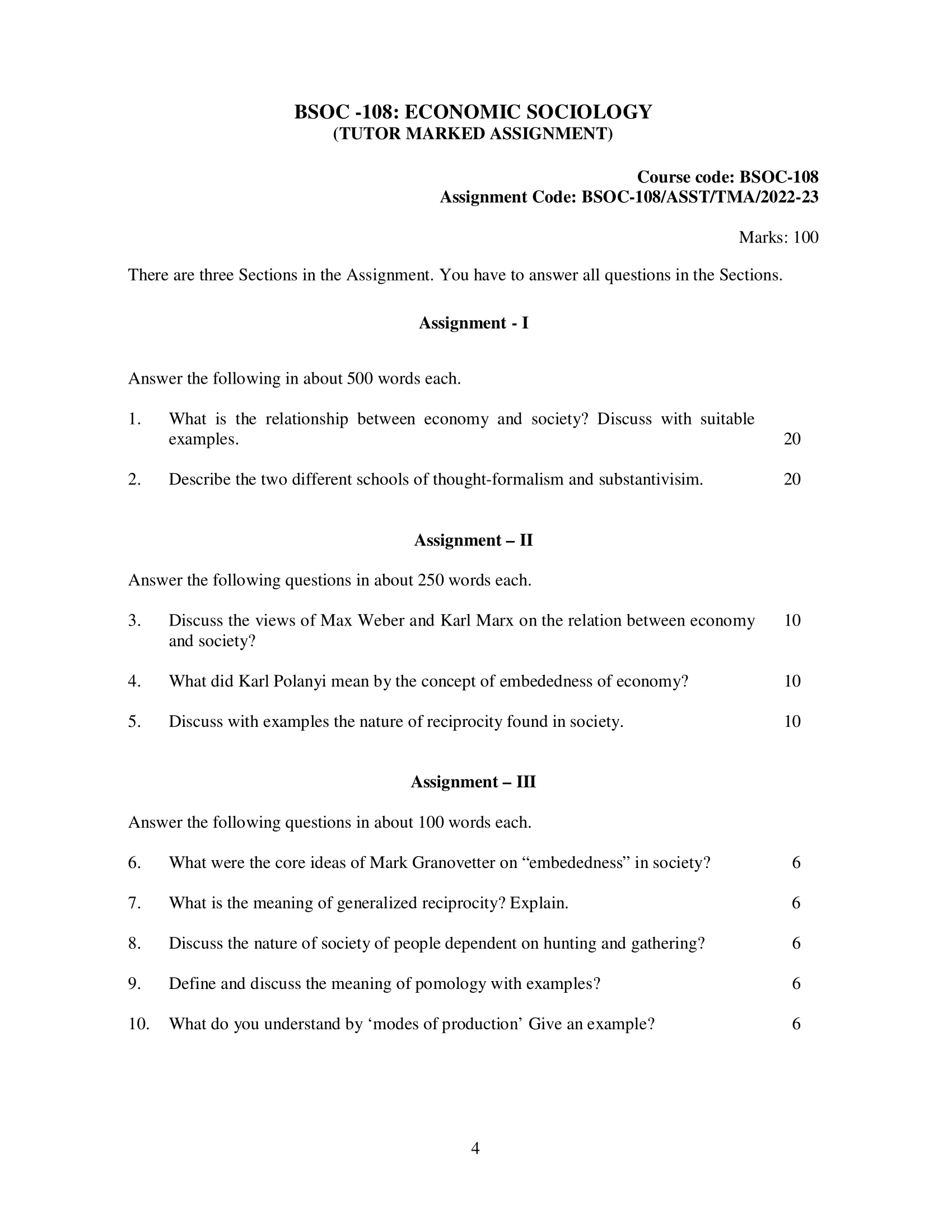
Assignment – I
Answer the following in about 500 words each.
1. What is the relationship between economy and society? Discuss with suitable examples.
Ans: The relationship between economy and society is one that is closely intertwined and interdependent. The economy refers to the production, distribution, and consumption of goods and services within a given society, while society refers to the collection of individuals living and working together in a particular community or country. The state of the economy can have a profound impact on the well-being and quality of life of individuals within a society. In turn, the values, norms, and behaviors of individuals within a society can influence the functioning of the economy. This essay will discuss the relationship between economy and society with suitable examples.
One key aspect of the relationship between economy and society is the impact of economic policies on social outcomes. Economic policies such as taxation, public spending, and regulation can have significant implications for the distribution of resources and the standard of living of individuals within a society. For example, in the United States, the progressive tax system is designed to redistribute wealth from the wealthy to the less affluent members of society. Similarly, public spending on education, healthcare, and social welfare programs can help to reduce income inequality and improve social outcomes. On the other hand, policies that favor the interests of the wealthy, such as tax cuts or deregulation of industries, can exacerbate income inequality and undermine social cohesion.
Another important aspect of the relationship between economy and society is the role of culture and social norms in shaping economic behavior. Cultural values such as individualism, consumerism, and materialism can have a significant impact on economic decision-making. For example, in the United States, the culture of individualism encourages people to pursue their own self-interest, which can lead to a focus on personal consumption rather than collective well-being. Similarly, the culture of consumerism encourages people to buy more goods and services than they need, which can contribute to environmental degradation and resource depletion.
In contrast, in some countries, there is a stronger emphasis on collective well-being and community values. For example, in Scandinavian countries such as Norway and Sweden, the culture of “lagom” emphasizes the importance of moderation and equality, which can contribute to a more sustainable and equitable economy. Similarly, the Japanese concept of “mottainai” encourages people to avoid waste and make efficient use of resources, which can help to reduce environmental degradation and improve the efficiency of the economy.
Finally, the relationship between economy and society is also shaped by the institutions and structures that govern economic activity. These include laws and regulations, financial institutions, and labor market institutions. For example, in some countries, labor market institutions such as minimum wage laws, collective bargaining, and social protection programs can help to reduce income inequality and improve social outcomes. Similarly, financial institutions such as banks and credit unions can play a role in providing access to credit and promoting investment in local communities.
2. Describe the two different schools of thought-formalism and substantivisim.
Ans: The formalist and substantivist schools of thought are two theoretical frameworks within the field of economic anthropology that offer differing views on the nature and function of economic systems. These two schools of thought provide different perspectives on the role of culture in economic behavior, and they have implications for how scholars approach the study of economic systems. This essay will describe the two different schools of thought, formalism and substantivism.
Formalism is an approach that emphasizes the study of economic behavior through the lens of abstract economic principles and models. Formalists view the economy as a self-contained system that operates according to universal economic laws and principles, independent of cultural, social, or historical factors. Formalists focus on the analysis of economic behavior in terms of rational choice theory and the optimization of individual actors.
According to formalists, economic behavior is driven by a desire to maximize individual utility or profit, and economic systems function best when left to operate according to free market principles, without interference from cultural, social, or historical factors. Formalists see economic behavior as an extension of human nature, and they emphasize the importance of individual incentives in shaping economic behavior.
The substantivist approach, in contrast, emphasizes the role of culture and society in shaping economic behavior. Substantivists view economic systems as embedded within social and cultural systems, and they argue that economic behavior cannot be understood without taking into account the broader social and cultural context in which it occurs.
Substantivists argue that economic behavior is shaped by cultural norms, values, and beliefs, and that economic systems are influenced by historical and environmental factors. They emphasize the importance of non-economic factors such as power, status, and social relations in shaping economic behavior. According to substantivists, economic systems cannot be reduced to abstract principles and models, but must be studied in the context of the broader social and cultural systems in which they are embedded.
Substantivists argue that economic systems can have multiple functions beyond the production and distribution of goods and services, such as the maintenance of social relations, the creation of social status, and the distribution of power. They also emphasize the importance of non-monetary transactions and the role of gift-giving and reciprocity in economic systems.
Assignment – II
Answer the following questions in about 250 words each.
3. Discuss the views of Max Weber and Karl Marx on the relation between economy and society?
Ans: Max Weber and Karl Marx had distinct views on the relationship between economy and society, although both considered the economic system as a crucial factor in shaping society.
Marx argued that economic relationships and structures have a primary role in shaping society, and that the economy determines the social structure, political system, and cultural values. Marx believed that the mode of production in a society (capitalism, feudalism, etc.) determines the social classes and relations of power. The capitalist economy, in his view, creates a class system in which the bourgeoisie owns the means of production and exploits the proletariat, who have no choice but to sell their labor for a wage. This exploitation leads to class conflict, which Marx believed was the driving force of history. Thus, Marx saw society as a product of economic relations and believed that the proletariat, the working-class, would eventually overthrow the bourgeoisie and establish a socialist society.
Weber, on the other hand, believed that the relationship between economy and society was more complex than Marx suggested. For Weber, economic relationships are only one of many factors that shape society, and cultural values, religious beliefs, and political structures also play a significant role. Weber argued that economic structures are embedded in a broader social and cultural context and that ideas and beliefs can shape the economy as much as economic structures shape ideas and beliefs. Weber also believed that bureaucracy, as a form of organization that relies on rules, procedures, and specialized roles, was an essential factor in shaping modern society.
4. What did Karl Polanyi mean by the concept of embededness of economy?
Ans: Karl Polanyi was a Hungarian economist and social theorist who is known for his ideas on the relationship between economy and society. One of his key concepts is the idea of the “embeddedness” of the economy, which he introduced in his book “The Great Transformation” (1944).
Polanyi argued that the economy is not a separate or self-contained system, but rather it is embedded in social and political institutions. In other words, economic activities are shaped by and embedded within social relationships, cultural practices, and political institutions. For Polanyi, the market is not a natural or spontaneous institution, but a human creation that is shaped by social and cultural forces.
Polanyi believed that the market economy, as we know it today, is a recent development in human history and that it was created through deliberate political and social action. He argued that before the rise of the market economy in the 19th century, economic activity was embedded within social relations, and transactions were governed by non-market institutions, such as kinship, religion, and custom. The market economy emerged when economic activities were detached from these social relations and institutions and placed in a separate sphere governed by the laws of supply and demand.
Polanyi was critical of the idea that the market should be the sole regulator of economic life. He believed that the market, left to its own devices, would lead to social and environmental destruction. Polanyi argued that economic activity should be embedded within social and political institutions that are designed to protect social and environmental values. He believed that the market should be regulated by social and political institutions to ensure that it serves the common good.
5. Discuss with examples the nature of reciprocity found in society.
Ans: Reciprocity refers to the practice of exchanging goods, services, or other benefits between people or groups. This practice can take many forms and is a fundamental aspect of many social relationships. Reciprocity can be found in all societies, and its nature varies depending on cultural norms, economic systems, and other factors. In this answer, we will discuss some examples of the nature of reciprocity found in society.
- Gift-giving: One form of reciprocity that is found in many cultures is gift-giving. In some cultures, gift-giving is a way to strengthen social relationships and create obligations between individuals or groups. For example, in many indigenous societies, gift-giving is a central part of the potlatch ceremony, where individuals and families give gifts to one another to establish and maintain social ties.
- Mutual aid: Mutual aid is a form of reciprocity where individuals or groups provide help and support to one another. This can take many forms, from small acts of kindness to more formalized systems of support. For example, in some rural communities, neighbors may come together to help each other with tasks like harvesting crops or building homes.
- Market exchange: Market exchange is a form of reciprocity that is based on the exchange of goods or services for money. In a market exchange, individuals or groups engage in transactions with one another to meet their needs and desires. The nature of market exchange varies depending on the economic system and cultural norms. For example, in some societies, haggling and negotiation are common practices in market exchanges.
- Sharing economies: Sharing economies are based on the principle of sharing goods or services rather than exchanging them for money. In a sharing economy, individuals or groups pool their resources and share them with others in the community. For example, ride-sharing services like Uber and Lyft are based on the principle of sharing rides with others.
- Social norms: Reciprocity is also influenced by social norms that dictate how individuals and groups should behave in social relationships. For example, the norm of “paying it forward” encourages individuals to perform acts of kindness for others without the expectation of a direct reward. Similarly, the norm of “tit-for-tat” encourages individuals to reciprocate actions that others have taken towards them.
Assignment – III
Answer the following questions in about 100 words each.
6. What were the core ideas of Mark Granovetter on “embededness” in society?
Ans: Mark Granovetter’s core idea of “embeddedness” in society refers to the extent to which social relations and networks are involved in economic activity. In his seminal work “The Strength of Weak Ties,” Granovetter argues that weak ties between individuals, or those that are less intimate, are often more valuable in accessing information and resources than strong ties. This is because weak ties tend to link people to different networks and social groups, providing access to a wider range of resources and opportunities. Granovetter’s work challenged the traditional economic view of individual actors making rational choices based on their self-interest, instead emphasizing the importance of social networks and relationships in shaping economic behavior.
7. What is the meaning of generalized reciprocity? Explain.
Ans: Generalized reciprocity is a form of exchange in which goods or services are given without any explicit expectation of immediate or direct return. In other words, it is a form of exchange that is not based on explicit calculations of benefits or obligations, but rather on a general sense of obligation to help others.
This type of exchange is often associated with close-knit communities or societies in which members have long-term relationships and a strong sense of mutual obligation. Generalized reciprocity can help to build and maintain social relationships and networks, and it is often used to facilitate exchanges that cannot be easily monetized or quantified.
For example, in many traditional societies, members of a community might come together to help a family build a new home or harvest crops, without any explicit expectation of immediate repayment. These acts of generosity and mutual support help to build and maintain social relationships and networks, and they can contribute to the overall well-being of the community.
Generalized reciprocity is distinct from other forms of exchange, such as balanced reciprocity or negative reciprocity, which are based on more explicit calculations of benefits and obligations. While generalized reciprocity may not provide immediate or direct benefits, it can help to create and maintain a sense of social cohesion and mutual obligation that can be beneficial in the long run.
8. Discuss the nature of society of people dependent on hunting and gathering?
Ans: Hunting and gathering societies are those in which people rely primarily on hunting wild animals, fishing, and gathering wild plants and other resources for their subsistence. These societies have existed for thousands of years and can be found in various parts of the world, including Africa, Australia, and South America.
The nature of these societies is often characterized by a high degree of mobility and a close relationship with the natural environment. Hunting and gathering societies typically live in small, nomadic groups that move from one location to another in search of food and other resources. These societies generally have low population densities and rely on a diverse range of resources to ensure their survival.
Hunting and gathering societies are often egalitarian in nature, with few social hierarchies or divisions of labor. While some degree of specialization may exist, such as differences in gender roles, the primary focus is on survival and the sharing of resources. Decision-making is often done through consensus, with individuals or groups having an equal say in matters that affect the community.
The social structure of hunting and gathering societies is typically based on kinship, with close family relationships playing a central role in social organization. These societies place a high value on cooperation and sharing, and there is often a strong sense of community and mutual support. Conflict resolution tends to be informal, with disputes often settled through negotiation and mediation.
In terms of culture, hunting and gathering societies often have rich traditions and a strong connection to the natural world. Religious beliefs and rituals may be focused on the spirits of the natural world, and there may be a strong emphasis on oral storytelling and other forms of cultural expression.
While hunting and gathering societies have largely disappeared in the modern world, some small-scale societies still practice this way of life. Studying these societies can provide insights into the ways in which human societies have adapted to their environments over time, and the cultural and social dynamics that have shaped these communities.
9. Define and discuss the meaning of pomology with examples?
Ans: Pomology is the scientific study of fruit cultivation, production, and post-harvest management. The word “pomology” is derived from the Latin word “pomum,” which means fruit, and it encompasses the study of all fruits, including berries, nuts, and tree fruits. The study of pomology involves a range of scientific disciplines, including plant physiology, genetics, breeding, and horticulture.
Pomologists work to understand the biology and ecology of fruit trees, the various pests and diseases that can affect them, and the best methods for cultivating and harvesting different types of fruits. They also work to develop new fruit varieties through breeding and other techniques.
One of the key goals of pomology is to improve the quality and quantity of fruit production, both for commercial purposes and for personal consumption. Pomologists study the optimal growing conditions, harvesting techniques, and post-harvest storage and handling methods to ensure that fruits are of the highest quality and remain fresh for as long as possible.
Examples of fruits that are studied in pomology include apples, peaches, pears, plums, cherries, citrus fruits, grapes, berries, and many others. The work of pomologists has led to significant improvements in fruit production and quality over the years, and has helped to increase the availability and diversity of fruits in markets around the world.
10. What do you understand by ‘modes of production’ Give an example?
Ans: Modes of production refer to the ways in which societies organize the production of goods and services. It is a concept developed by Karl Marx, who argued that the dominant mode of production in a society shapes its social and economic relations. Marx identified different modes of production, such as slavery, feudalism, capitalism, and socialism. For example, in a capitalist mode of production, the means of production (such as factories and machinery) are owned privately, and workers sell their labor to capitalists in exchange for a wage. This results in a class-based society where the interests of the capitalists and workers are in conflict.
How to Download BSOC-108 Solved Assignment?
You can download it from the www.edukar.in, they have a big database for all the IGNOU solved assignments.
Is the BSOC-108 Solved Assignment Free?
Yes this is absolutely free to download the solved assignment from www.edukar.in
What is the last submission date for BSOC-108 Solved Assignment?
For June Examination: 31st April, For December Examination: 30th October





